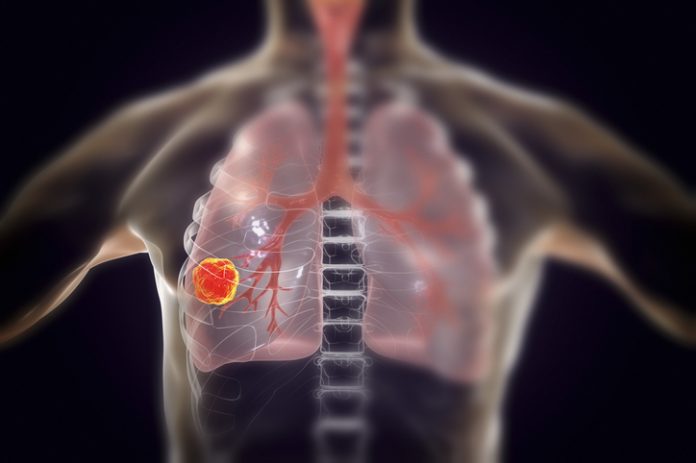
A novel liquid biopsy test has shown promise in revolutionizing the treatment approach for non-small cell lung cancer (NSCLC) that has spread beyond the lungs by identifying those patients that may benefit most from radiation treatments. The new data was released today in a presentation at the American Society for Radiation Oncology (ASTRO) Annual Meeting and was published in npj Precision Oncology.
The research was led by senior author Aadel Chaudhuri, MD, PhD, an assistant professor of radiation oncology at the Siteman Cancer Center of Washington University School of Medicine, St. Louis and can help oncologists determine whether a patient’s cancer has just a few other tumor sites or is more widespread in the body—vital information to helping treating physicians determine the most appropriate treatment.
“Our findings suggest the level of circulating tumor DNA, rather than the number of tumors themselves, is a more precise measure of disease burden,” said Chaudhuri.
NSCLC accounts for roughly 84% of all lung cancers, and Chaudhuri noted that when the disease becomes widespread—where it has spread past a patient’s lungs and lymph nodes—usually can’t be cured. But some patients have a form of the cancer call oligometastatic disease where the cancer has spread to only site can experience long periods of cancer-free survival when they received high-dose radiation treatments that target just those tumor sites.
But identifying this subset of patients has been a challenge. Tumor tissue biopsies only provide information on the tumor site where the sample was collected and imaging methods to detect other sites is limited in identifying micro-metastatic disease. Chaudhuri likens a visible tumor to an iceberg: “if the disease is just the part of the iceberg that’s visible above the water, or if there’s substantially more micro-metastatic disease beneath the surface.”
For this reason, Chaudhuri and team turned to a liquid biopsy approach to analyze ctDNA, RNA, and other biomarkers in the blood that can help find the presence of cancer early. The team has extensive experience developing liquid biopsy tests, having previously published results of using it for the detection of other cancer types.
For the current study, a real-world, multi-institutional analysis of data from 309 patients with oligometastatic NSCLC from 2016 to 2022. For those whose blood showed traces of ctDNA, median overall survival was 16.8 months, compared to 25 months for patients with no ctDNA detected prior to treatment.
Progression-free survival was also worse for those whose blood showed traces of ctDNA prior to radiation therapy. Median progression-free survival was 5.4 months for patients with detectable ctDNA, compared to 8.8 months for those with no detectable ctDNA prior to treatment. These findings were corroborated by multivariate models that included eight additional clinical and genomic parameters.
These findings indicate that the level of ctDNA is a more precise measure of disease burden than the number of tumors. Patients with detectable ctDNA prior to radiation therapy had worse overall survival and progression-free survival compared to those with no detectable ctDNA.
“When you have a detectable ctDNA level, you have a higher burden of disease. Our findings indicate that we can use this biomarker to support patient-centered treatment decisions in the oligometastatic cancer setting,” Chaudhuri concluded.











